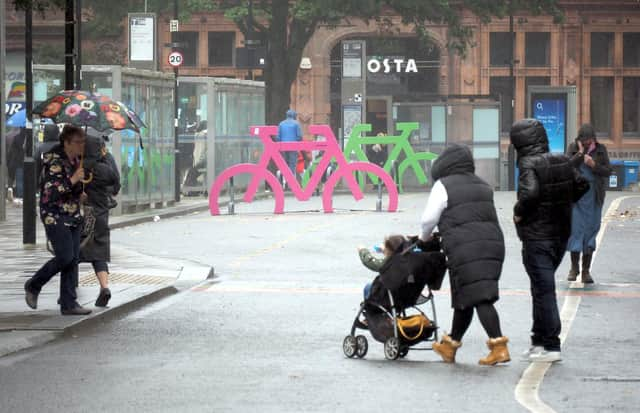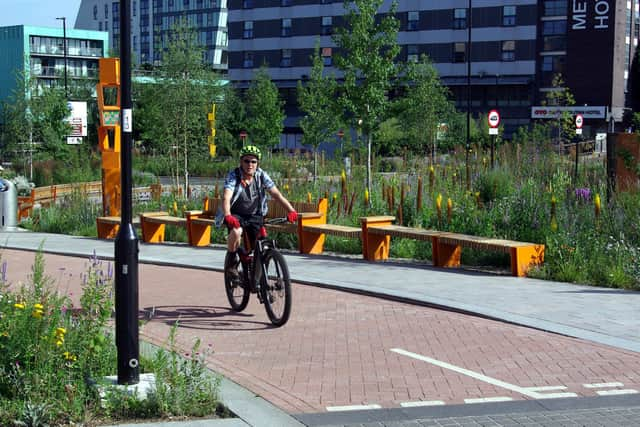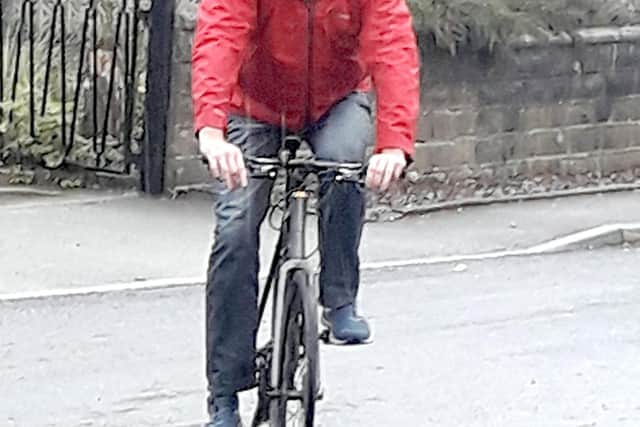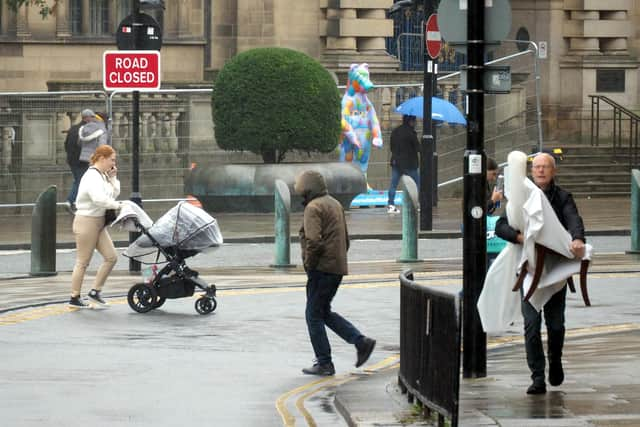'Why we should all walk and cycle more in Sheffield - for our health and the planet"


“To which my standard response is, ‘No, 100 per cent of trips are health related, by rote of whether we choose to walk or cycle, which is obviously good for us, or whether we choose to get in a car, which arguably isn’t good for us.”
So says Sheffield D irector of Public Health Greg Fell, who recently wrote a personal blog post on: ‘Why we don’t walk and cycle enough and what to do about it.’
Advertisement
Hide AdAdvertisement
Hide AdExercising while travelling is good for public health, while sitting in a car for a length of time is pretty bad for us as individuals, he observes, while the toxic air pollution from cars, and the carbon dioxide, is definitely not good for public health.


“Carbon and climate is the public health crisis of the next century, and it will dwarf all other public health crises,” he says.
The answer he suggests in his blog is to accept the ‘build it and they will come’ philosophy, because the evidence says that trying to persuade the public to drive less and walk and cycle more won’t work unless more money is spent building better routes for people to walk and cycle on. And this is in the government’s hands, he writes.
“The significant modal shift that government seeks won’t be solved by simple behavioural fixes and nudges. It will take significant investment shift away from transport investment to support driving.”
Advertisement
Hide AdAdvertisement
Hide AdHe cites how refurbishing just 10 miles of the M62 costs about the same as the whole of the Department for Transport budget for walking and cycling facilities in England, and while the national budget for active travel is about £338m, for roads it’s £27.4bn.


For public health and climate reasons, he’d like to see the viability (and funding) of transport schemes linked to health and climate outcomes.
These issues are very important locally as well as nationally, he says.“We don’t walk enough, we don’t cycle enough, we drive too much, especially for short journeys,” he writes, adding that a third of all car journeys in South Yorkshire are less than 500 metres.
“This is bad for us, and bad for the planet.”Local and national politicians need to think about transport choices differently, thinking about how people’s choices are influenced by what gets built, and how those decisions then affect public health and everyone’s desire to reduce carbon emissions.
Advertisement
Hide AdAdvertisement
Hide AdHe also points out the economic advantages of increasing walking and cycling, when health and environmental effects of transport are considered as well as the higher local spend of active travellers.


A study from Copenhagen found that society lost 1.7 Euros for every 10km driven, while it gained 1.6 Euros for every km cycled.The bike is Greg’s personal transport of choice, combined with a train when he comes to his Sheffield office.
He walks short distances, but finds his bike quicker and easier for any trip up to about 4 miles. He has a car, but finds he’s using it less and less.
“I’m thinking will I replace it when it reaches the end of its useful life? Probably not to be honest, as cars are money pits,” he says.He emphasises that we’ve seen the effects of the ‘build it and they will come approach' over the last fifty or more years, where cities built for car travel attract more and more car travel. It’s now time to build for walkers and cyclists, and if we do, they will come, he suggests.
Advertisement
Hide AdAdvertisement
Hide Ad“When we built the M1, there weren’t many cars on it, were there? But look at it now!”And although he recognises that we have a very vocal cycling lobby in Sheffield, he has no truck with the idea of a ‘war’ between drivers and cyclists. It’s about how can we try and do the right thing?” he says. “And how do we design our cities to enable the right thing to be the default